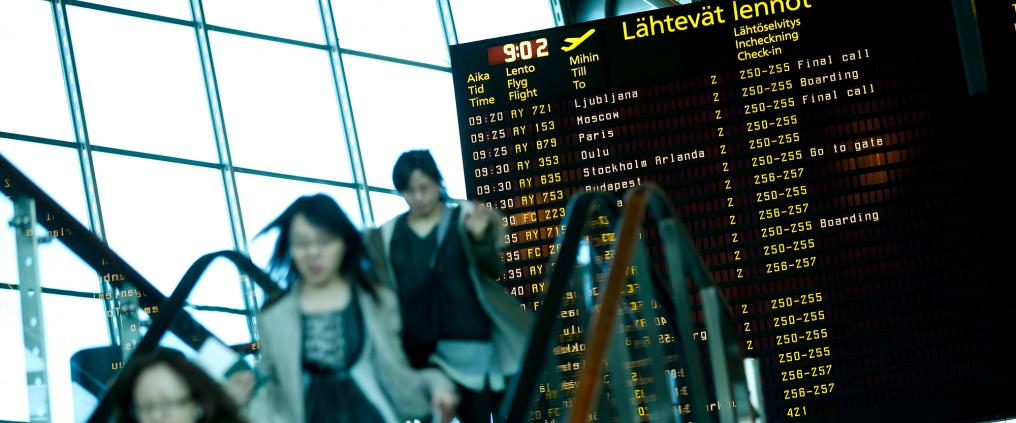The International Air Transport Association (IATA) expects the number of passengers traveling by air to double by 2030, from just under 4 billion in 2015 to over 7 billion. At the same time, there is intense pressure to reduce the environmental impact of flying. A tricky combination, but one that the industry is already tackling head on.
We spoke to Paul Steele, Senior Vice President, Member and External Relations & Corporate Secretary of IATA, about the current measures taken as well as the exciting new technologies that the industry is incorporating for both passenger comfort and emissions reduction.
What does the dramatic growth in passenger numbers require of the aviation industry?
Ensuring we have the capacity to deal with the growing number of passengers and aircraft fleet is a challenge. We need to take advantage of new technology in making existing facilities as efficient as possible.
Real-time tracking of baggage should help the passenger get through the airport as quickly as possible.
The goal of IATA’s Fast Travel Program is to offer 80 percent of global passengers a complete range of relevant self-service options throughout their journey by 2020. These could include anything from being identified using facial recognition when entering the airport to real-time tracking of baggage, all of which should help the passenger get through the airport as quickly as possible.
By improving infrastructure, we can also shorten taxiing times and make sure planes don’t have to circle around airports waiting to land.
What is the industry doing to minimize the environmental impact of increased air travel?
Over the last 10 years, we’ve worked intensely to implement a plan for reducing aviation emissions. We want to improve fuel efficiency by an additional 16 percent by 2020, and have in fact already managed to disconnect the growth of emissions from the growth of aviation traffic.
The second target is carbon neutral growth, which means stabilizing the growth of emissions at the 2020 level.
The second target is carbon neutral growth, which means stabilizing the growth of emissions at the 2020 level. There’s real determination in the industry to push for environmentally friendly solutions: Last year, 191 states signed a landmark agreement that requires airlines to purchase carbon offset credits to cover those emissions in excess to the 2020 level that they haven’t been able to reduce.
Alternative fuels are an obvious area of development. To give an example, we are already able to mix biofuel made from forestry waste with kerosene. Another program will involve using the sun’s power to break down materials to their molecules before they are reassembled into jet fuel — the aircraft would essentially be powered by the sun. And by 2050, we could well have battery-powered aircraft carrying up to 150 people on shorter routes.
There is significant potential for growth in unmanned cargo planes: FedEx and Amazon are pioneering delivery drones. It may be quite a while, though, before your flight takes off without a pilot!
What inspires you to continue working in aviation?
Aviation continues to be an incredibly inspirational business: It’s the dream of man to fly, and we provide that opportunity millions of times every year.
The industry is an enabler of both social and economic development on a global scale – I like to think of aviation as a force for good as it truly connects people.
Looking into the future, there will be great technological advances that are balanced with a focus on environmental impact. Both the challenges and the opportunities in the industry are enormous.
What significant technologies do you expect will affect “everyday flying"?
Both the Boeing 787 Dreamliner and the Airbus A350 XWB already feature many new elements, such as larger windows, electronically controlled shades and reduced in-flight noise.
By 2035-2040, commercial aircraft might assume a blended wing body shape familiar from the military, which would require an entirely new seating arrangement. Delta-shaped aircraft are also much more fuel efficient than the current tube and wing planes.
Safety is always our prime consideration, so while automated, pilotless commercial flights are feasible, they will be only in the longer term. Having said that, a drone that could carry two people has already been developed in China, and it’s exciting to see quick progress in this area.
Read how Helsinki Airport's CDM operating method saves time
Finnair and Finavia test face recognition technology at check-in
Top expert interview: How the aviation industry fights the climate change?



